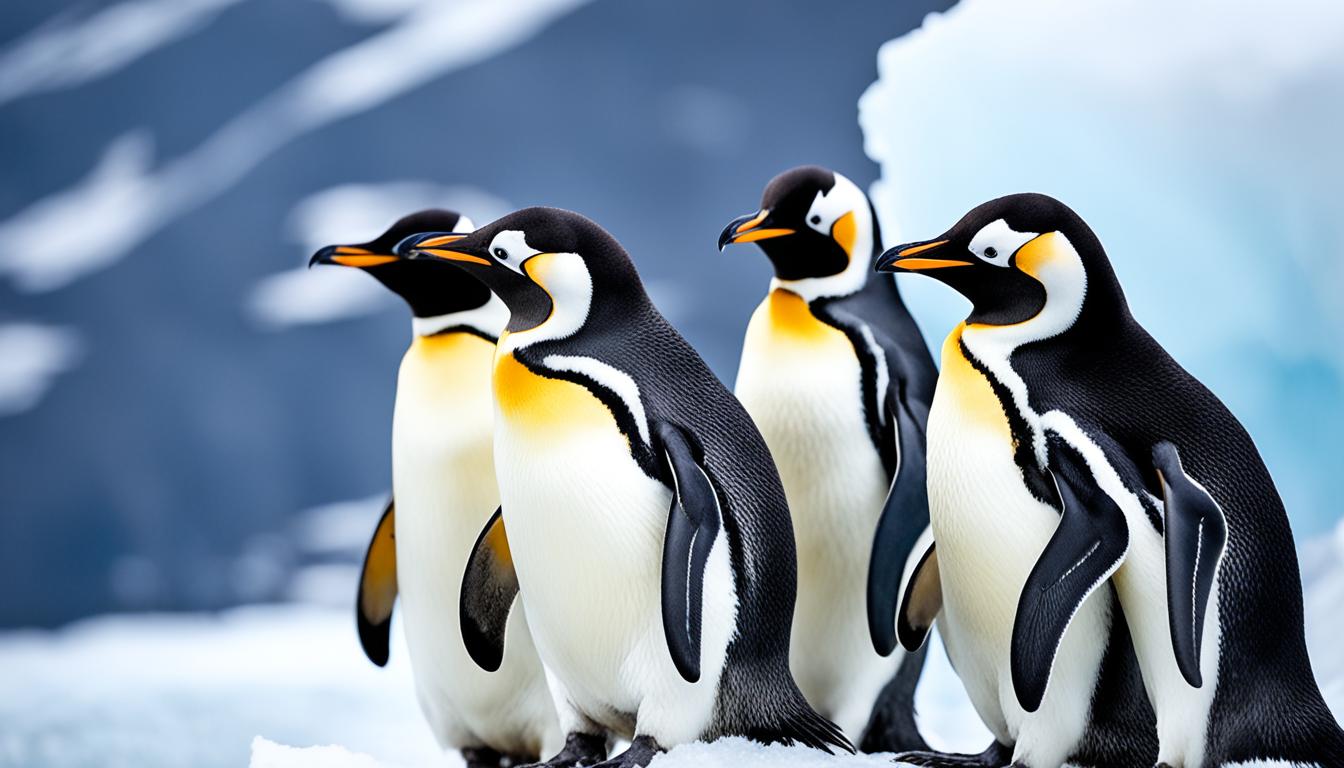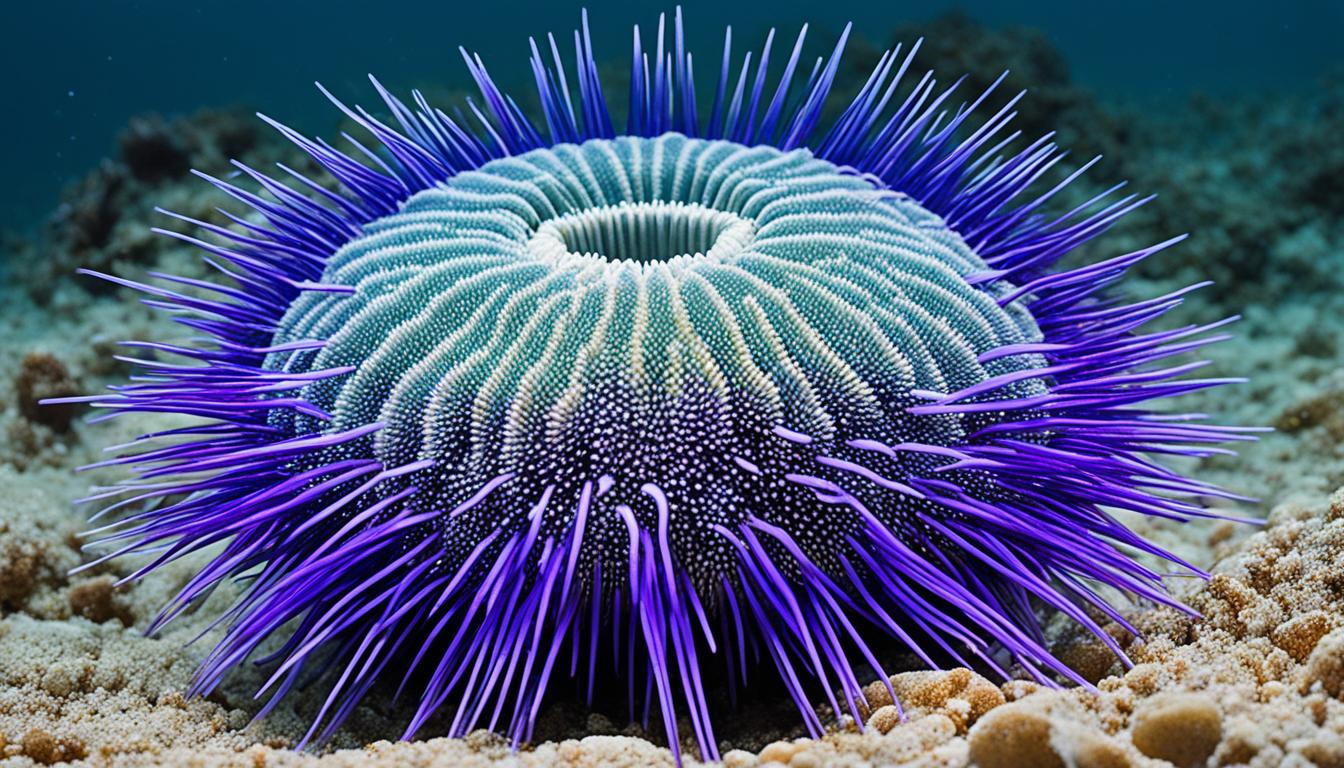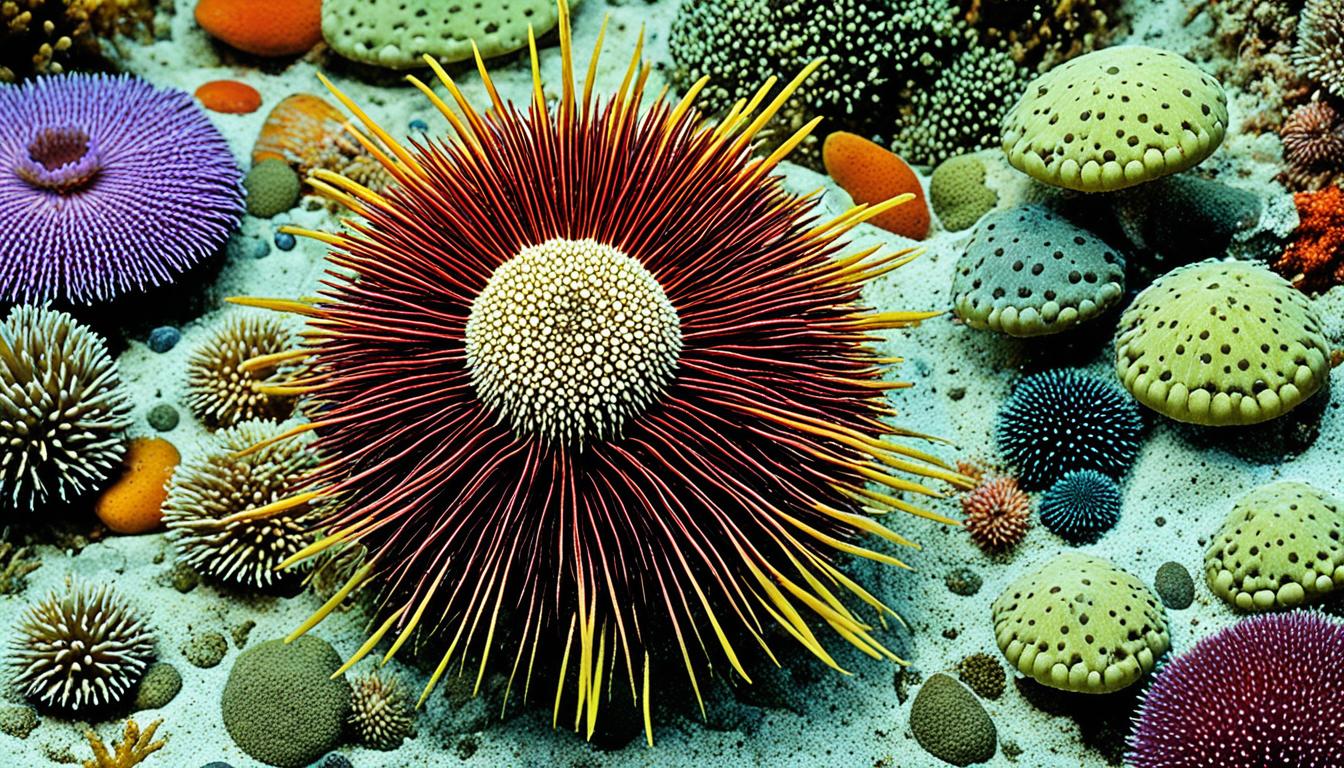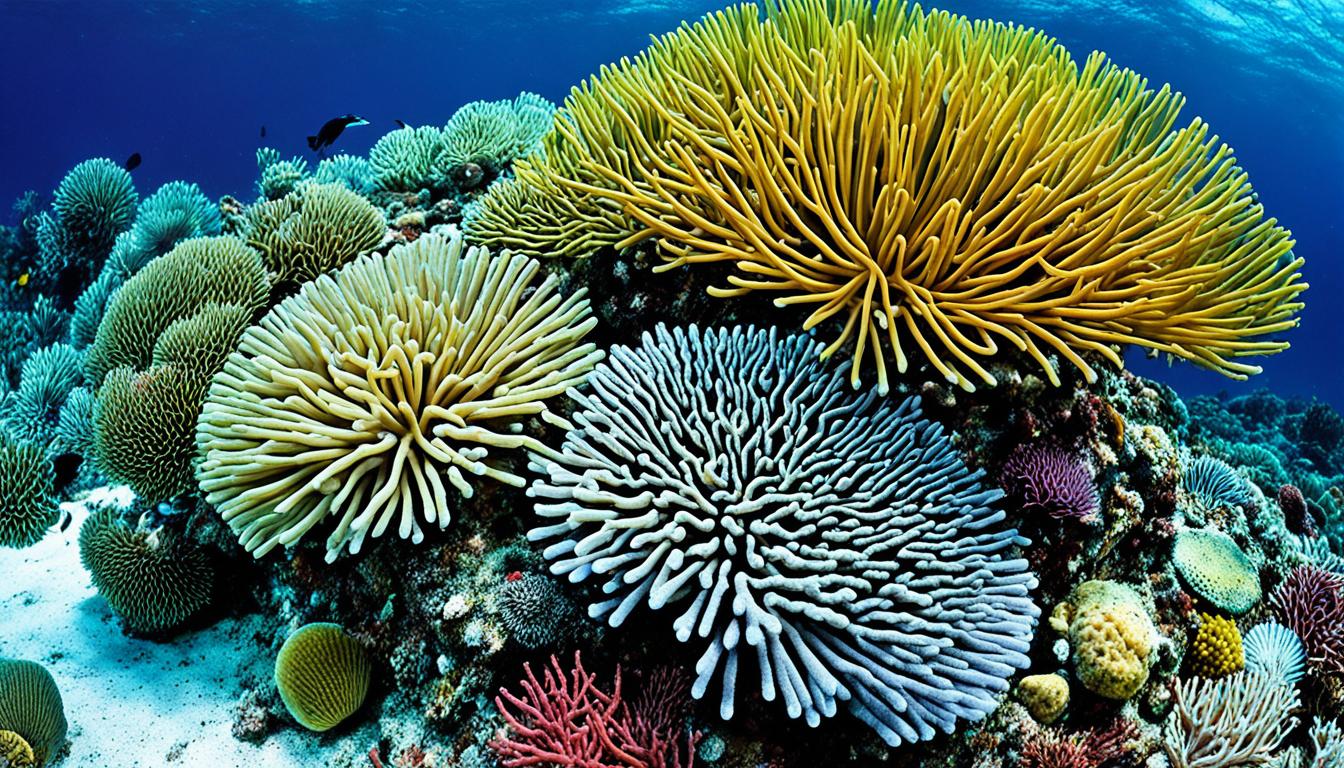Penguins live in some of the coldest places on Earth, especially in Antarctica. To understand how they stay warm, we need to look at their amazing survival strategies. These animals have special ways to keep warm because they are warm-blooded.
They have thick fat layers and a unique way of huddling together. This shows how their biology and environment work together. Let’s explore how penguins stay warm in such cold climates.
The Importance of Size for Thermal Regulation
Size is key for penguins to stay warm in cold weather. Bigger penguins keep heat better than smaller ones because they have less surface area compared to their volume. This helps them survive in harsh conditions.
The Emperor penguin, up to 30 kg (66 lbs), shows this benefit clearly. On the other hand, the Rockhopper penguin, around 2.5 kg (5.5 lbs), loses heat faster. This shows how size affects penguins’ ability to adapt to the climate.
Larger penguins can lose less heat, thanks to their evolution. This helps them live well in icy places. Their size is a big part of how they stay warm and survive.
How Do Penguins Stay Warm?
Penguins are amazing creatures, well-suited to the cold climates they live in. They stay warm by using their body size and how they keep heat in. Bigger penguins are often better at keeping warm, helping them live in very cold places.
Body Size and Surface Area Ratio
The size of an animal affects how it stays warm or cool. As an animal gets bigger, its volume grows faster than its surface area. This means big penguins lose less heat because they have a smaller surface area compared to their volume. Think of two cubes, a big one and a small one. The big cube loses less heat because it has a smaller surface area for its size.
Benefits of Being Bigger in Cold Climates
In cold places, being big is a big plus for penguins. Big penguins are better at keeping warm in extreme cold. They can keep their body heat better than smaller penguins. This helps them survive in Antarctica’s tough conditions.
| Penguin Size | Surface Area (m²) | Volume (m³) | Surface Area to Volume Ratio | Heat Retention |
|---|---|---|---|---|
| Small Penguin | 1.00 | 0.30 | 3.33 | Poor |
| Medium Penguin | 1.50 | 0.60 | 2.50 | Fair |
| Large Penguin | 2.00 | 1.00 | 2.00 | Good |
Knowing how body size helps penguins stay warm shows how they adapt to their cold homes. The better they keep heat in, the better they can survive the cold.
The Role of Insulation in Penguin Survival
Insulation is key for penguins to survive in harsh temperatures. They use their blubber and feathers to stay warm in water and on land. These adaptations help penguins live in freezing places.
Penguin Blubber Insulation
A penguin’s blubber layer is vital for insulation. This penguin blubber insulation can be up to 30% of their body weight. It acts as a heat shield and energy source. This fat layer keeps their core warm even in icy waters, letting them survive in temperatures as low as -1.9°C (25.8°F).
Penguin Feather Structure and Function
The penguin feather structure is made for keeping warm. Penguins have short, overlapping feathers and a fine down layer beneath. This setup traps air to keep warmth in. These feathers protect penguins from the cold, especially when they’re on land.
Effectiveness of Feathers vs. Blubber
Blubber and feathers both help penguins stay warm, but in different ways. Feathers work best in dry conditions but not when wet. Blubber keeps penguins warm underwater. Together, these features make penguins well-suited for their cold homes.

| Insulation Method | Primary Function | Effectiveness in Water | Effectiveness on Land |
|---|---|---|---|
| Blubber | Provides thermal insulation and energy reserve | Very effective | Less effective when exposed to air |
| Feathers | Traps air for warmth | Less effective when wet | Very effective when dry |
Unique Adaptations for Cold Weather
Penguins have amazing ways to stay warm in the cold. They use special heat exchange and blood circulation to keep their bodies at the right temperature.
Heat Exchange Mechanisms in Penguins
Penguins have a cool trick to stay warm called heat exchange. They have a special network of blood vessels called the Rete Mirabile. This system helps them keep their body temperature steady.
Warm blood goes to their feet and flippers, then gives off heat before returning to the core. This keeps their core warm and saves heat. It’s a smart way to stay cozy in the cold.
Blood Circulation and Temperature Regulation
Penguins also control their blood flow to stay warm. When it’s freezing, they reduce blood flow to their feet and flippers. This keeps their core warm and safe.
When it gets a bit warmer, they increase blood flow. This helps cool down their body. It’s a clever way to keep their temperature just right.
| Adaptation | Description | Benefit |
|---|---|---|
| Rete Mirabile | Network of blood vessels for heat exchange | Conserves body heat |
| Reduced blood flow | Less blood to extremities in cold | Prevents excessive heat loss |
| Increased blood flow | More blood to extremities when warmer | Cools down core body temperature |
Penguin Huddling Behavior: A Social Survival Strategy
The penguin huddling behavior is a key survival tactic mainly used by Emperor penguins. It helps them stay warm during the harsh Antarctic winters. By grouping together, they reduce the cold winds’ impact. This method keeps each penguin warm and helps them share body heat.
This behavior is vital for their social survival. Penguins move towards the huddle’s center to get warmer. This movement keeps everyone warm and strengthens family bonds. Studies reveal that this movement is planned to keep the group warm together.
In extreme cold, huddling is crucial for breeding and raising chicks. Temperatures drop below freezing, making it vital to keep warm and protect the young. The penguin huddling behavior shows how social groups aid survival. It highlights the link between community and individual strength against the environment.










